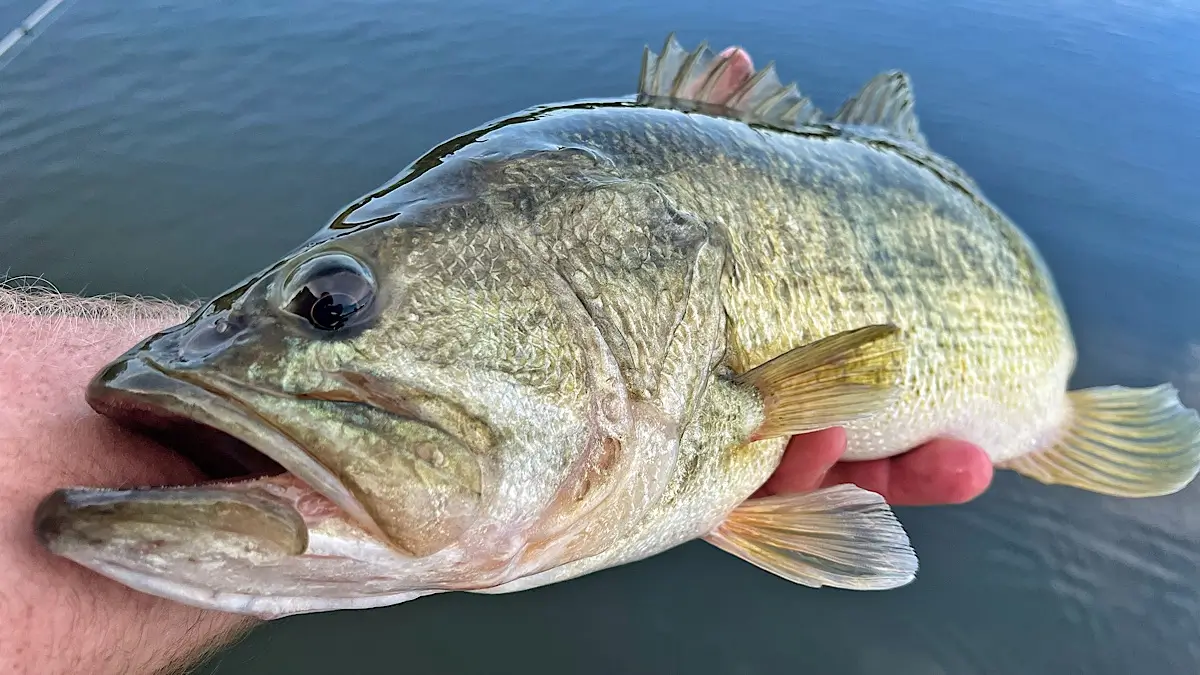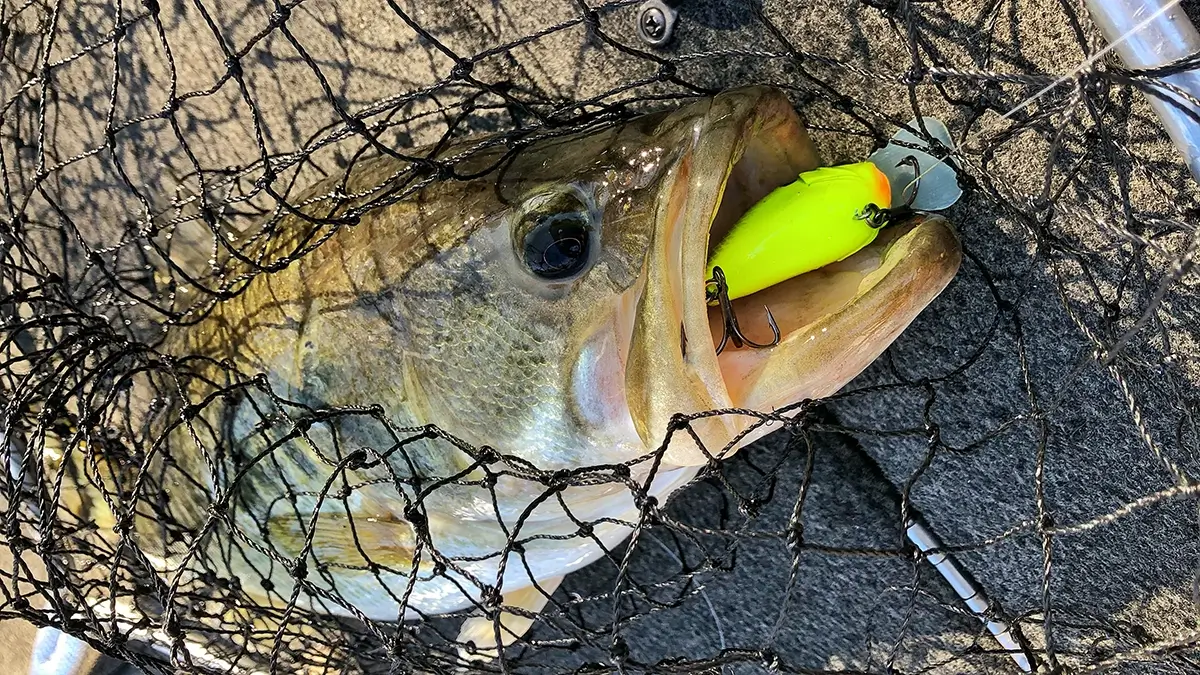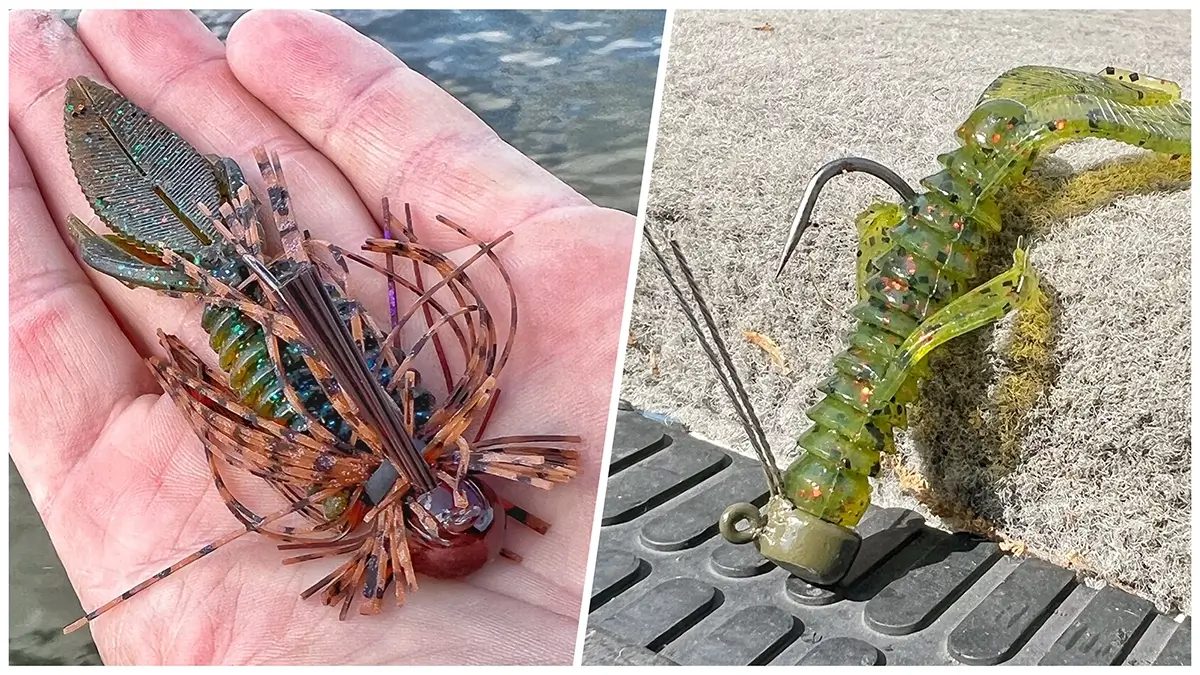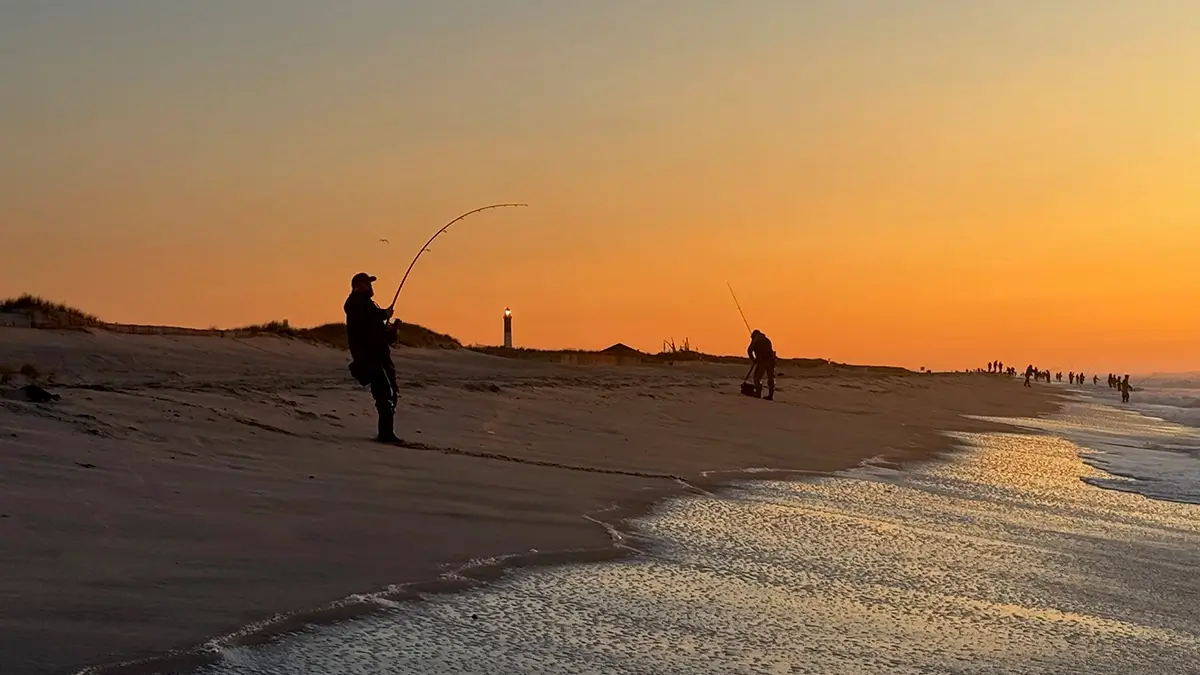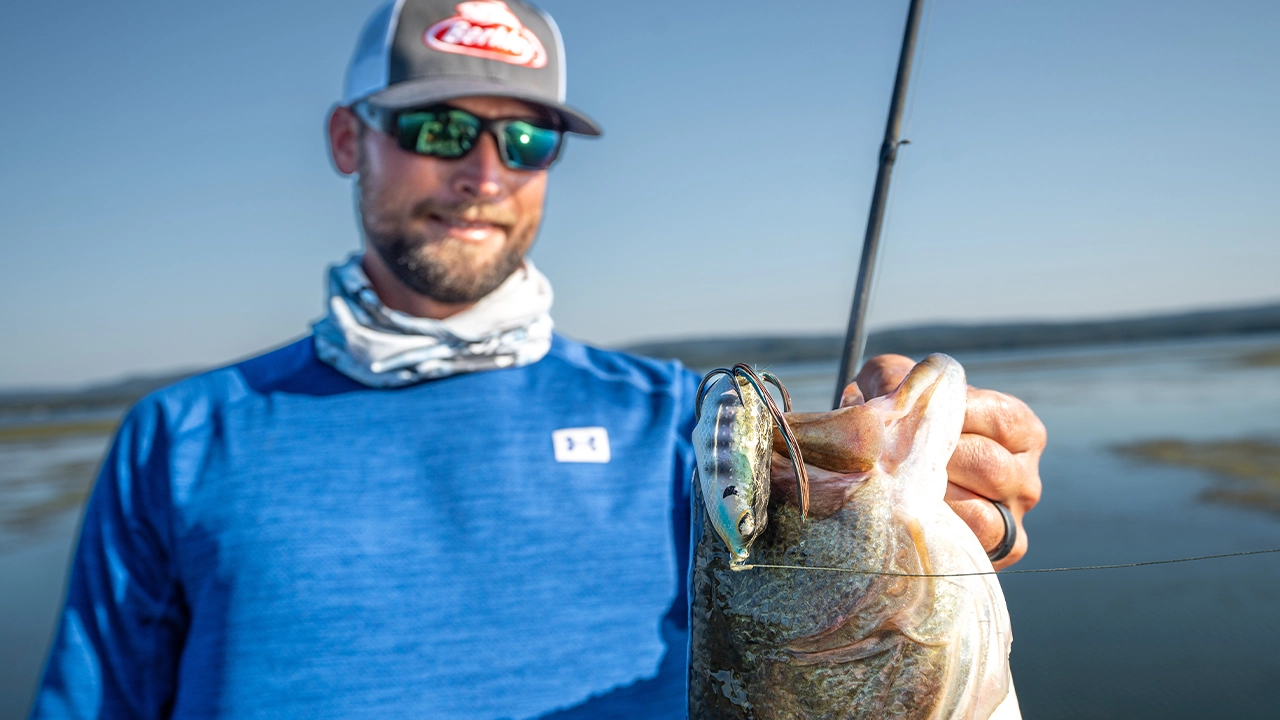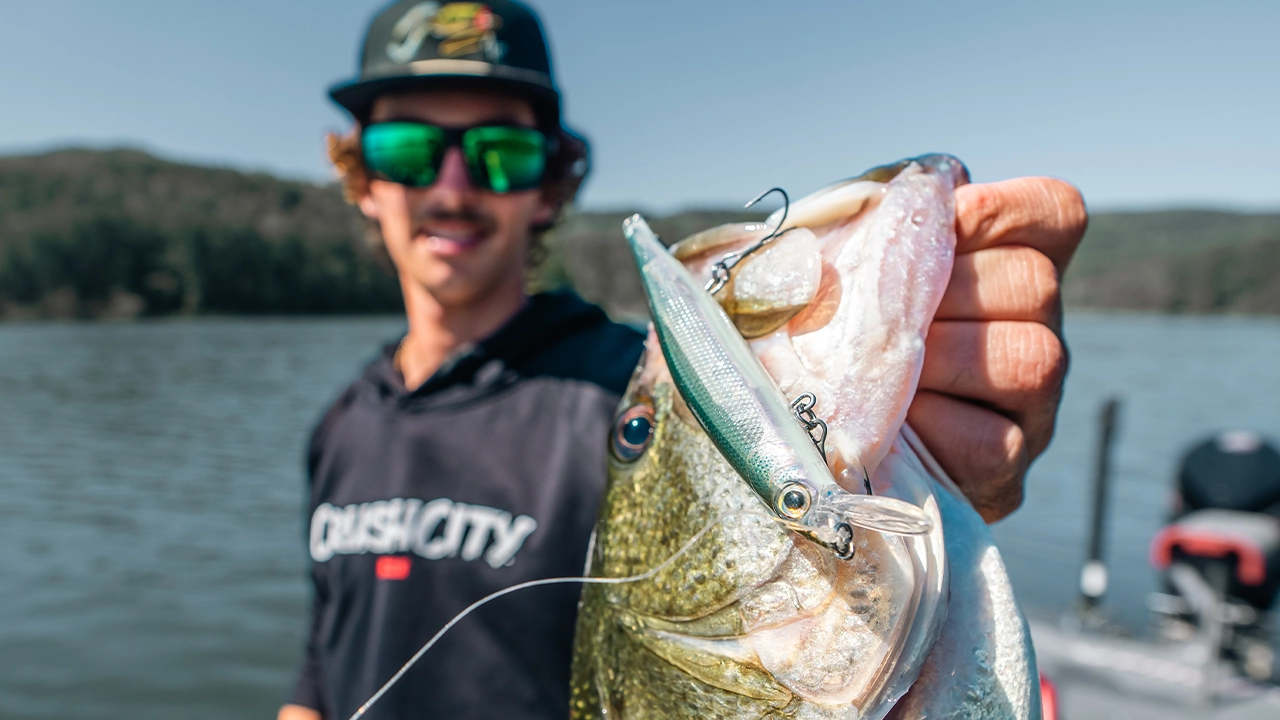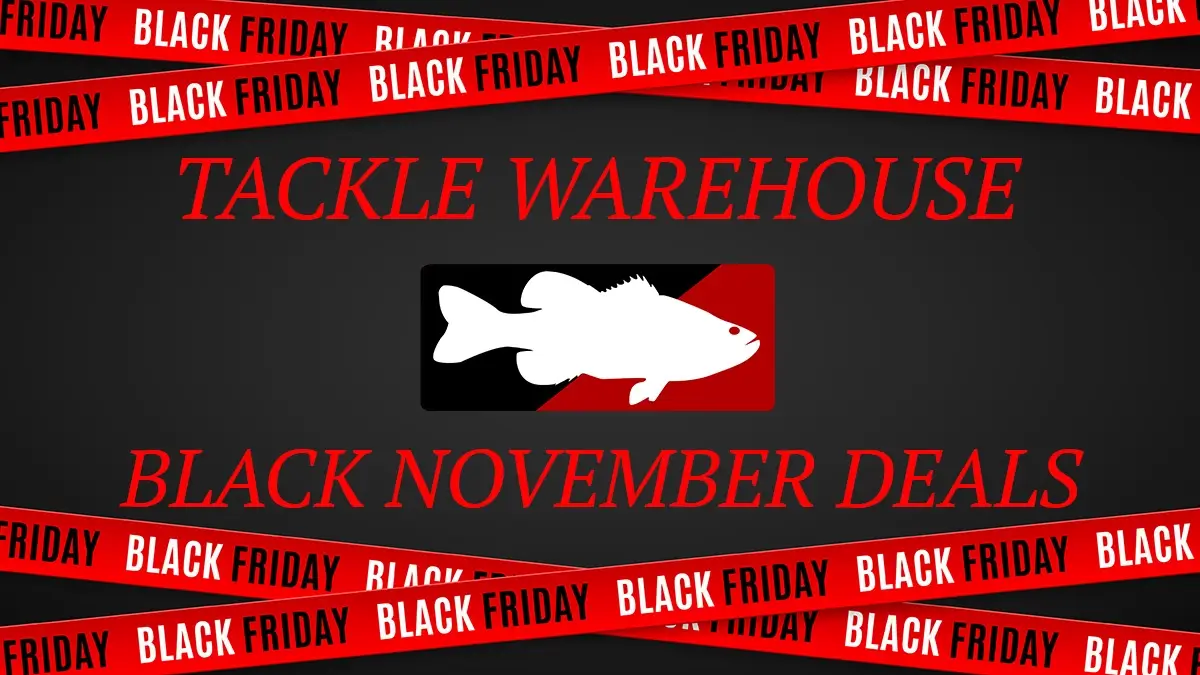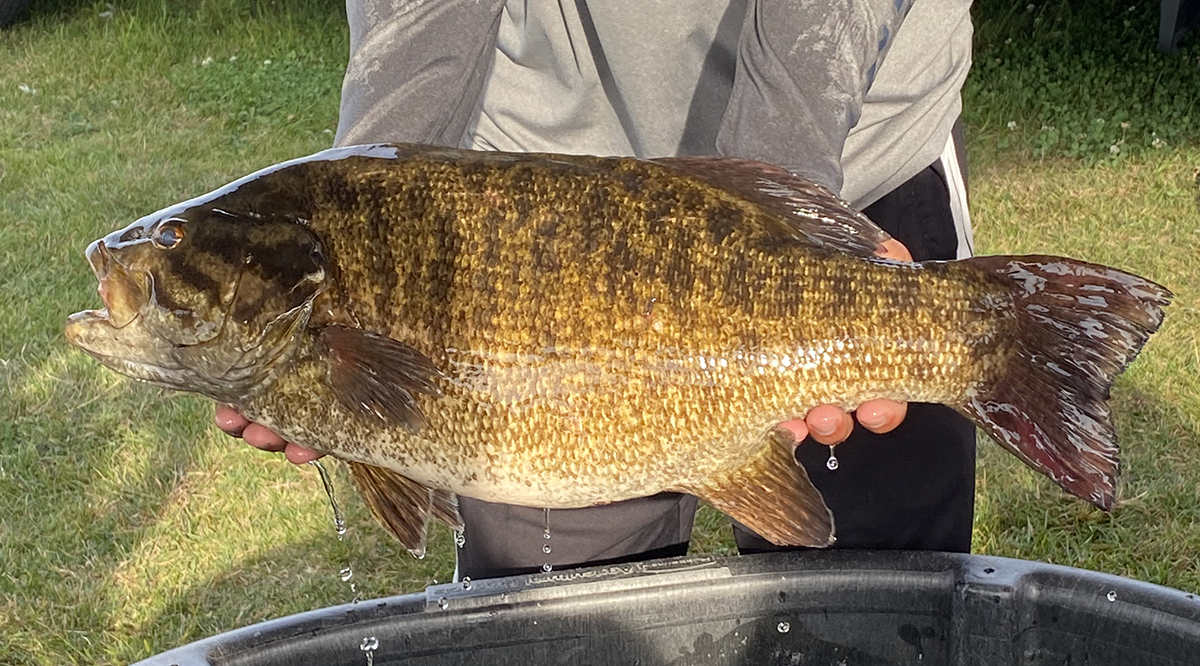Bass fishing has been great as of late. But November is here and the big shift in water temperature is imminent. Depending on where you live, there could be big shifts in patterns in the coming days.
Here in the Southeast where I live, we survived October without the normal hard freeze or two knocking our fish in the head. Water temps are still lingering in the upper 60s and even low 70s in places. But that will all change this month. Colder weather will inevitably set in, water temps will plummet and the dreaded fall turnover will take its toll.
So, what lures are we throwing in November to combat this big shift? That’s what we’re going to talk about today. I’ll make a case for several of the baits that I have on deck in November, and we’ll round up a few notes from other anglers around the country too to see what the Turkey Day month has in store for areas near most of you.
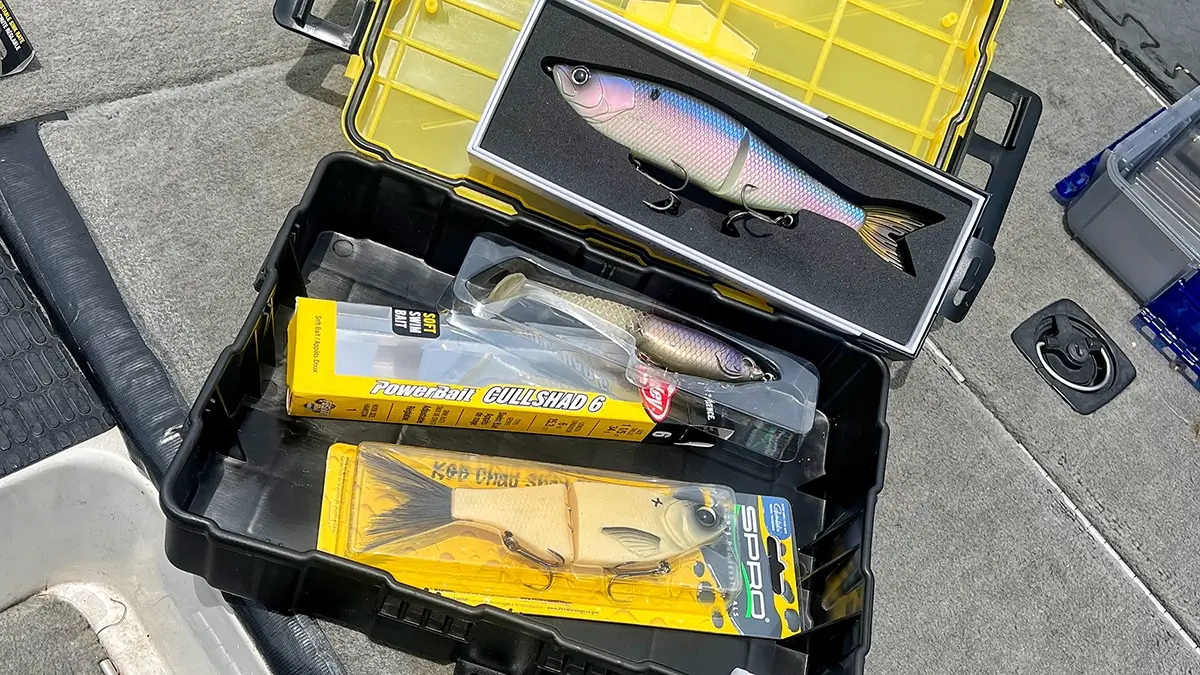
GLIDE BAITS
November is great for glide bait fishing. Though the topwater bite starts to fade as the water temps dip below 65 degrees, the fish are certainly still willing to chase down a big meal and even feed up near the surface. Inserting a glide bait into this scenario creates the perfect opportunity to have a lot of fun fishing in an exciting and interactive way.
If you’ve never fished a glide bait before, the size of these baits alone can be a little intimidating at first. But if you really stop to think about the size of 7-inch glide bait in comparison to a Spook or one’s presence in the water up against a big willow leaf spinnerbait, there’s really not much difference.
The Cull Shad is a great example of a reasonably-sized introductory glide bait if you want to give this style of fishing a try. It runs true and is quite versatile, giving you the ability to chop the bait quickly, reel it continuously or slowly walk it side-to-side with wide glides. The latter is my favorite in the fall. The 9-inch 6th Sense Draw is another bait I’ll have on deck a good bit this fall that has a great slow and wide glide to it.
SPINNERBAITS
We stressed the importance of spinnerbaits ad nauseam in the What We’re Throwing in October piece we did last month, and we have to touch on them again for November too. I actually keep some type of spinnerbait on the deck all year, but the fall is my second favorite time of year to fish one — with the pre-spawn being the only season I rely on one even more.
Bass are shallow and feeding heavily on bait in November. This is the perfect scenario for a spinnerbait. It’s a good idea to start with a double willow leaf spinnerbait early in November and wake it just beneath the surface for bass that are schooling on bait in any depth of water. Then you can transition to a tandem Colorado/willow leaf spinnerbait shallow as the water temps continue to drop through the 60s and into the 50s.
Once the water temp dips below 52 degrees late in the month or in December, I’ll often transition to a double Colorado spinnerbait. In any case, there’s a spinnerbait — if not multiple spinnerbaits — on deck for me in November for sure.
KREJ
Now the Berkley KREJ is a bait that I’m just starting to really acquaint myself with, but one I’m definitely going to have on deck a lot this November. When it first came out last year, I thought it was a bit gimmicky. It seemed to be a cute idea to capitalize on the forward-facing sonar craze, but not a legitimate fish catcher. However, I started seeing several videos pop up on my feed the last month or so of anglers catching schooling bass on this bait, even without using FFS. So, I decided to take one out with me on a recent trip to give it a try myself.
I spent the day targeting schooling fish below a dam on the Chattahoochee River and probably caught 20 fish on the KREJ. Most were small spotted bass, with a few largemouth and stripe mixed in, but all of them were enamored with the KREJ. I would just cast it out and reel it right below or along the surface through the current and the fish would annihilate it.
I didn’t have to add any action or work the bait at all. It just dipped and rocked and darted up and down all on its own. And these fish–which I’ve fished for in the past and have found them to be active but also notoriously finicky at the same time–couldn’t stand it. This is the best bait I’ve encountered in a long time for getting schooling bass to bite. And it’s one I’ll definitely be fishing with again several times in November.
CRANKBAIT
Crankbaits are going to be a mainstay for me throughout November; several types of them. This time of year anything from a lipless to a squarebill to a Shad Rap works really well. The bass are moving along steep banks, in the shallows and scattered across flats. And these are all great places to throw some sort of crankbait.
The Jackall Bling is a crankbait that I’ve mentioned before as one my dad and I like to throw a lot in the fall, and it’ll be on deck at some point this November for sure, as will the SPRO Little John, Bill Lewis SB 57, Strike King Red Eye Shad and some Shad Rap-style crankbaits. All of these crankbaits work well in November. And you can use their various actions to keep an appealing bait in the water throughout the transition to colder temps.
Typically I like to throw the Little John or Bling as long as I can before moving to the finess-ier Shad Rap-style crankbaits. But I’ll use the squarebills and lipless baits throughout November and just modify the speed of my retrieve on those to give the increasingly lethargic bass an opportunity to eat them.
NED RIGS AND FINESSE JIGS
Around November is when the Ned rig and finesse jig will start making their way back into the rotation for me. These bottom baits become better and better the colder it gets; especially on fisheries with good spotted bass and smallmouth populations, which are typically clear and rocky. Something like a Jewel Tactical Finesse HD jig works really well when the water temps get into the lower 50s, all the way down to when the water starts to ice over even.
Most of the time, Ned rigs are even more effective at getting bit than the finesse jigs. I prefer to throw the finesse jig if possible, because I can fish it on a baitcaster. But, if the fishing is really tough and I need to get a bite, the Ned rig gets the nod. I really like the Picasso Rhino Ned Head paired with a good old Z-Man Finesse TRD. That’s a hard combo to beat.
AROUND THE COUNTRY
That’s how I see the Southeast shaping up over the next month, but let’s take a look at the patterns setting up around the country. Here are some tips from the pros that know those regions the best, as they see it.
TEXAS: ALTON JONES JR.
Fishing in November around Central Texas can be really, really tough. I’m going to fish one of two things: the shortest, deepest pockets on the main lake, keying in on any rock that’s available. Or I’m going to go as far back into the creeks as I can get.
Some Texas lakes have a lot of rock, some don’t have any. If there’s a lot of it, I’m going to look for areas that go from rock to no rock — those kinds of 45-degree chunk rock banks. And where you don’t have much, I’m just looking for any rock that’s available.
On those main lake pockets, I’m going to strictly be fishing moving baits, whether it’s a buzzbait, Whopper Plopper, Horny Toad or crankbait. And I’m going to be fishing fast, covering water, looking for those late summer wolf packs of fish.
If I’m not fishing that way, I’m going to go as far back into the creeks as I can get, fishing isolated wood with a spinnerbait, possibly a small jig and a squarebill crankbait. And I’m going to make multiple casts to a single piece of cover. This time of year, 90% of the fish I catch are going to be on moving style baits, since it’s fall and they’re keying on small to medium size shad most of the time.
I don’t want a creek that has hundreds of pieces of cover; I want to go to the creek that’s got a dozen pieces of cover. There’s no such thing as too shallow or too dirty. And don’t be afraid to pick up a topwater even on a cold, cold morning right after a cold front. Really, as long as it’s above 55 degrees, I’m still going to be throwing a topwater.
MIDWEST: BEN NOWAK
Here in the Midwest, November is the time of year where fishing starts to slow down. Water temps begin falling drastically, below 50 degrees, and fish start to move to wintering areas.
This is the time of year that they’ll group up in big schools on deep structure, especially smallmouth. My go-to baits are a blade bait in white, gold or silver depending on water clarity, a small 2.85-inch Beast Coast Slow Flow swimbait crawled on button, a 1/2-ounce finesse football jig and a deep diving jerkbait.
In November, a lot of our fish are starting to move deep or are already in their winter areas. A lot of the times when I’m targeting that medium depth range, less than 15-foot of water, I’ll use the deep diving jerkbait or a finesse jig and occasionally a blade bait depending on if I’m fishing around hard bottom areas.
As I move into deeper water, I will really focus on the blade bait and the small swimbait, crawling it on the bottom. For me the small swimbait is best fished super slowly and can be used to help cover a little bit more water than the blade bait.
A lot of our fish start to key in on hard bottom areas this time of year on our very last living grass, similar to what they get on in the spring earlier in the season. So if you can find those areas where there’s hard bottom transitions, whether it’s gravel or rock to sand or even sand to mud, those fish will start to key in on those harder bottom areas in that deeper water zone, where they’re going to spend the rest of the winter.
NORTHEAST: JOE ALBANESE
The weather has been unseasonably warm throughout the Northeast, so a lot of the late summer patterns are still standing up. The Finger Lakes are still holding their grass, and I’ve had success working a swimming jig just over the top of weedines in 10 to 20 feet of water. Working the edges with an underspin has also been producing well, with the bonus of putting up numbers if you stumble onto a good school.
I’ve always been a sucker for a tube, and the recent cold snap reaffirmed that. Temps went from about 60 to 29 overnight, and it was time to slow things down. Dragging a Strike King Bitsy tube through rock going from the shoreline out to about 15 or 20 feet produced bites. The key was pulling the bait so slowly it hurt, with an erratic jerk thrown in very now and then.
If you can find some suspended fish, break out the blade baits. These always do well in deeper water, but really come into their own as bass transition out to their winter haunts. I’ve always liked Binky’s version, but others will work as well.
On the salty side of things, striped bass have been keeping anglers busy on the beach and offshore on the bunker pods. Sand eels have been present on the open beach, so anglers fishing needlefish plugs have been scoring well. Out in the pods, toss a walk-the-dog bait like the Saltwater Super Spook and hang on.


